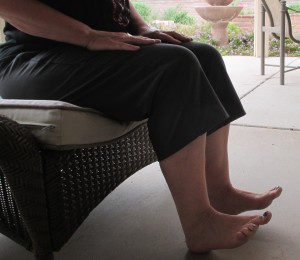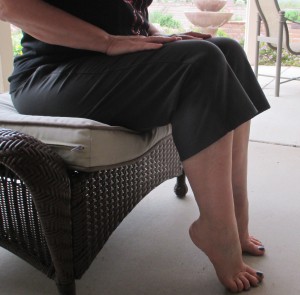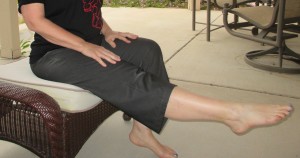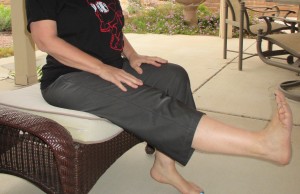Two people I know fell last week.
On Thursday my 20 year old student-let’s call her May-declared to me after class that “the reason I came out of those poses early is I tripped and fell down the stairs last week”. May’s injured ankle had mostly recovered from mild soreness and strain.
She also unfortunately defined herself as a klutz. Aside from the new goal of reprogramming her negative self-label, when we further reviewed the incident she told me she wasn’t paying attention as she walked down the stairs.
49 year old “June” tripped and fell in a parking lot. The surface was simply not level. She broke her distal fibula and is now wearing a mobilizing boot. June told me she was hurrying to get to her vehicle.
In addition to consciousness raising about one’s surroundings, I believe there is often a difference between the person who trips, and the person who trips-and falls!
For myself and my students, that difference is practicing yoga for balance.
Six overlooked factors contributing to balance-How regular Yoga practice helps
1. Yoga teaches us to pay attention to the present moment. We train ourselves to tune in to our posture, to see, to hear, and to naturally be aware of our surroundings. If ability to see or hear becomes impaired, paying attention is still crucial, however we must rely on the other senses and the other factors.
2. Standing poses increase the strength of our legs, our core and the litheness of the ankle joints. See exercises below!
3. Consistent yoga practice improves our proprioception. Simply put, proprioception is the sense of our body in space. Proprioceptive feedback from our feet and ankles is particularly important for balance.
4. Yoga includes balance postures ranging from simple to very challenging. Any student can improve balance and there is a starting place for all. Through repetition, the body and mind improve their magnificent coordinated work, and soon balance is enhanced. No more klutz labels!
5. Pregnant women, people in their 90s and every age in between can progress in balance ability. The more we practice the more stable our balance.
6. Yoga improves how all balance systems work together, including the vestibular system.
Below you will find 6 ways to sprinkle balance and ankle mobility practices throughout your day.
1. Stand (with dignified posture) on one leg while brushing your teeth. Make sure to switch sides. You are correct. I don’t normally stand outside whilst teeth brushing, but this desert is prettier than anyone’s bathroom!




2. Ankle stretch while sitting. Role forward and back on the soles of your feet and feel the massage.

Related Articles:
Yoga for Osteoporosis Supporting Strength, Bones and Balance
Yoga for the Toes: Another Key for Balance



3 Comments
Now I’m going to not only try brushing my teeth with the non-dominant hand, I’m going to try balancing on one leg! Thanks for the great suggestion!
You’re welcome C Iatarola! Thank you for reading-glad you enjoy the suggestion!
Comments are closed.